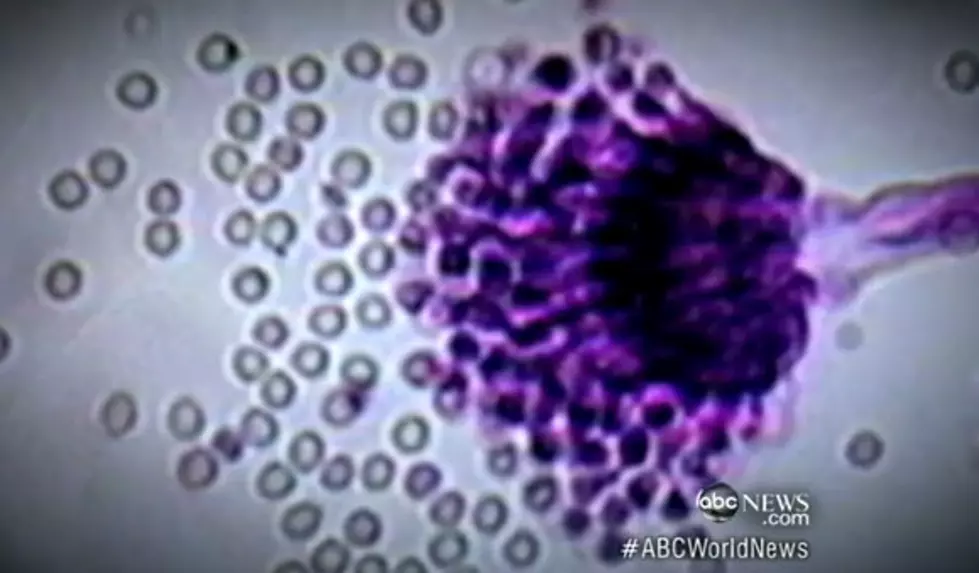
Mold, Bacteria at Pharmacy Tied to Meningitis Outbreak
Federal health inspectors say staffers at a pharmacy linked to the deadly meningitis outbreak over the past year documented dozens of cases of mold and bacteria growing in rooms that were supposed to be sterile.
In a preliminary report on conditions at the pharmacy, The Food and Drug Administration said Friday that even when the contamination at New England Compounding Center exceeded the company's own safety levels, there is no evidence that staffers investigated or corrected the problem.
The report comes from an FDA inspection of the Framingham, Mass.-based company earlier this month after steroid injections made by the company were tied to an outbreak of fungal meningitis. FDA officials confirmed last week that the black fungus found in the company's vials was the same fungus that has sickened 338 people across the U.S., causing 25 deaths.
The New England Compounding Center's lawyer said Friday the pharmacy "will review this report and will continue our cooperation with the FDA."
Compounding pharmacies like NECC traditionally fill special orders placed by doctors for individual patients, turning out a small number of customized formulas each week. They have traditionally been overseen by state pharmacy boards, though the FDA occasionally steps in when major problems arise. Some pharmacies have grown into much larger businesses in the last 20 years, supplying bulk orders of medicines to hospitals that need a steady supply of drugs on hand.
The FDA report provides new details about NECC's conditions, which were first reported by state officials earlier this week. The drug at the center of the investigation is made without preservative, so it's very important that it be made under highly sterile conditions. Compounding pharmacies prepare their medications in clean rooms, which are supposed to be temperature-controlled and air-filtered to maintain sterility.
But FDA inspectors noted that workers at the pharmacy turned off the clean room's air conditioning every night. FDA regulators said that could interfere with the conditions needed to prevent bacterial growth.
Inspectors also say they found a host of potential contaminants in or around the pharmacy's clean rooms, including green and yellow residues, water droplets and standing water from a leaking boiler.
Additionally, inspectors found "greenish yellow discoloration" inside an autoclave, a piece of equipment used to sterilize vials and stoppers. In another supposedly-sterile room inspectors found a "dark, hair-like discoloration" along the wall. Elsewhere FDA staff said that dust from a nearby recycling facility appeared to be drifting into the pharmacy's rooftop air-conditioning system.
The FDA on Friday declined to characterize the severity of the problems at NECC, or to speculate on how they may have led to contamination of the products made by the pharmacy. FDA emphasized that the report is based on "initial observations" and that the agency's investigation is ongoing.
The agency also provided new details about the pharmacy's handling of the steroids it recalled last month. The company recalled three lots of steroids made since May that totaled 17,676 single-dose vials of medicine -- roughly equivalent to 20 gallons.
The shots are mainly used to treat back pain.
According to the agency's report, the pharmacy began shipping vials from the August lot to customers on Aug. 17. That was nearly two weeks before the pharmacy received test results from an outside laboratory confirming the sterility of the drug. When FDA scientists went back and tested the same lot this month, they found contamination in 50 vials.
Outside experts said the report paints a picture of a dysfunctional operation.
"The entire pharmacy was an incubator of bacteria and fungus," said Sarah Sellers, a former FDA officer who left the agency in 2008 after unsuccessfully pushing it to increase regulation of compounding pharmacies. She now consults for drug manufacturers.
"The pharmacy knew this through monitoring results, and chose to do nothing."
(Copyright 2012 by The Associated Press. All Rights Reserved.)
More From New Jersey 101.5 FM



![U.S. Headed for Domestic Oil Only? [AUDIO]](http://townsquare.media/site/385/files/2014/02/143637418-300x200.jpg?w=980&q=75)



![Debt and No Degree: A New Trend? [AUDIO]](http://townsquare.media/site/385/files/2014/01/10462763565_f7754242d6_b.jpg?w=980&q=75)

